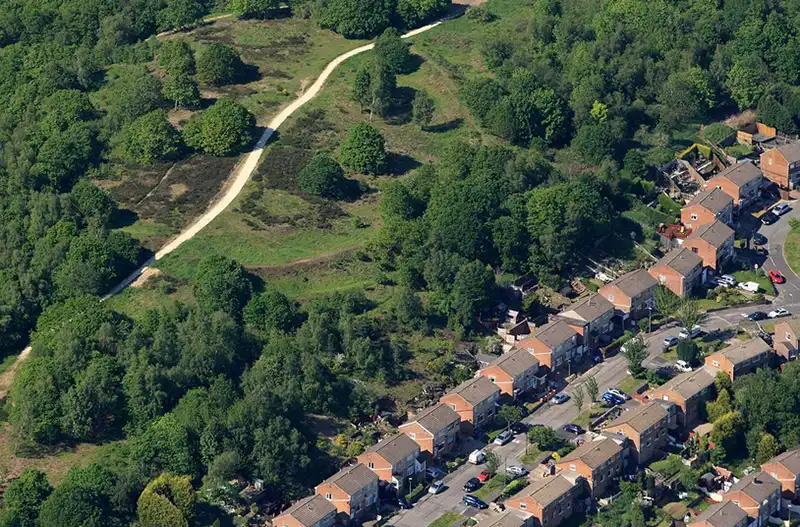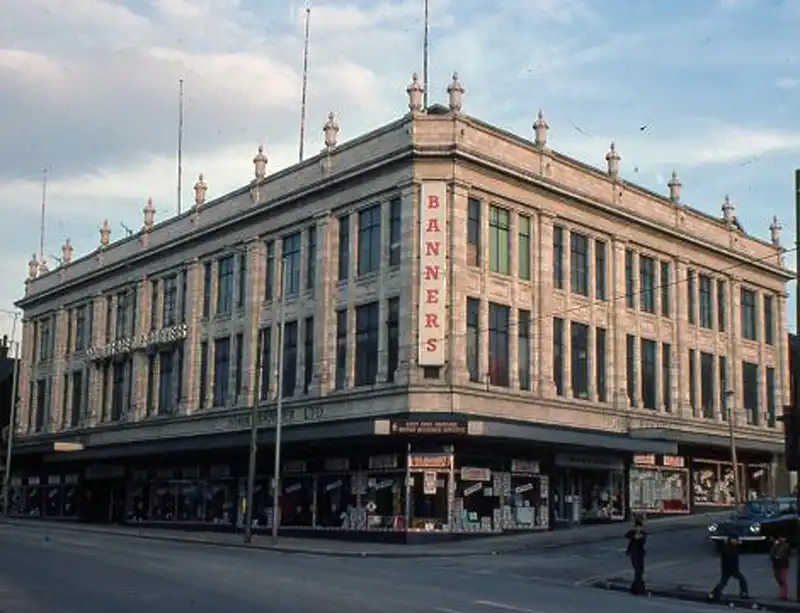Wincobank, a suburb in the north of Sheffield, is steeped in history and cultural significance. Nestled within the Sheffield 9 (S9) postcode, it is an area of contrasts, blending its ancient past with modern life. The most striking aspect of Wincobank’s history is its Roman hill fort, an enigmatic feature that has fascinated archaeologists and history enthusiasts alike. Additionally, in recent years, Wincobank gained international recognition when its challenging roads became part of a leg in the Tour de France.
The Wincobank Hill Fort: A Window into the Past
The Wincobank hill fort is one of Sheffield’s most prominent historical landmarks. Perched atop Wincobank Hill, it offers commanding views over the Don Valley and beyond. The fort is thought to date back to the late Iron Age, around 500–100 BCE, and may have been used into the Roman period. Its strategic location suggests that it served as a defensive stronghold, possibly protecting the local Brigantes tribe, who were the dominant Celtic tribe in northern England during that time.
Archaeological Significance
The hill fort is defined by its oval-shaped earthworks, which remain visible today. These earthworks consist of ditches and banks that would have been reinforced with wooden palisades. The defensive structures were likely designed to guard against incursions by rival tribes or, later, Roman forces. Evidence of roundhouse foundations within the fort suggests it was a living settlement, housing families and providing shelter during conflicts.
Archaeological excavations in the area have unearthed fragments of pottery, tools, and other artifacts, shedding light on the daily lives of its inhabitants. The fort’s proximity to the River Don would have provided access to water, while the surrounding woodland offered resources such as timber and game. Despite its apparent isolation, the hill fort was likely part of a broader network of settlements and defensive sites across South Yorkshire.
The Roman Influence
During the Roman conquest of Britain in the 1st century AD, the Brigantes initially maintained a tenuous alliance with the Roman Empire. However, this relationship eventually soured, leading to Roman military campaigns in the region. It is unclear whether the Wincobank hill fort was actively defended against the Romans, but its continued occupation suggests that it remained an important site during this tumultuous period.
The Romans left their mark on the wider area, establishing roads, settlements, and industrial sites. The nearby Roman Ridge, a causeway thought to be a Roman road, connects Wincobank to other parts of the region. This road would have facilitated trade and movement of troops, underscoring the strategic importance of the area.
Wincobank in Modern Times
Fast forward to the present day, and Wincobank remains a place of historical interest and natural beauty. The hill fort, now a scheduled ancient monument, is a popular destination for walkers and history buffs. The wooded slopes of Wincobank Hill are part of the larger Wincobank Common, offering scenic trails and breathtaking views of Sheffield’s skyline.
Community Engagement
The Wincobank area has a strong sense of community, with local groups actively working to preserve its heritage. Organizations such as the Friends of Wincobank Hill play a crucial role in maintaining the site and raising awareness of its historical significance. Regular events, guided walks, and educational activities ensure that the hill fort continues to be a focal point for learning and exploration.
Tour de France: Wincobank on the World Stage
Wincobank gained global attention in 2014 when it featured in the Grand Départ of the Tour de France. The Tour’s second stage, which started in York and ended in Sheffield, showcased the city’s steep and challenging terrain, including the infamous Jenkin Road in Wincobank.
Jenkin Road: A Cyclist’s Challenge
Jenkin Road, a short but brutally steep climb, has earned a reputation as one of the toughest cycling ascents in England. With a gradient peaking at 33%, it is a test of endurance and strength for even the most seasoned cyclists. When the Tour de France passed through Wincobank, thousands of spectators lined the route to cheer on the riders as they tackled this gruelling climb.
The inclusion of Jenkin Road in the Tour de France highlighted Sheffield’s suitability as a destination for competitive cycling. It also brought a sense of pride to the local community, who relished the opportunity to showcase their neighbourhood to a global audience. The event left a lasting legacy, inspiring many residents to take up cycling and explore the area’s challenging routes.
Legacy and Inspiration
The Tour de France brought international recognition to Wincobank and the wider Sheffield area, demonstrating how the city’s natural features could be leveraged for world-class sporting events. The event also spurred investment in local infrastructure, including improvements to roads and public spaces.
In the years since the Tour, Wincobank has continued to attract cyclists and outdoor enthusiasts. Jenkin Road remains a popular training ground for those looking to test their limits, while Wincobank Hill offers a more leisurely alternative for walkers and mountain bikers.
The Blend of Past and Present
Wincobank is a microcosm of Sheffield’s rich history and vibrant culture. The hill fort serves as a reminder of the area’s ancient past, while modern events like the Tour de France demonstrate its relevance in contemporary life. This blend of old and new is what makes Wincobank such a fascinating place to explore.
The area’s enduring appeal lies in its ability to connect people with history, nature, and community. Whether you’re climbing Jenkin Road, exploring the hill fort, or simply enjoying the views from Wincobank Hill, it’s impossible not to feel a sense of wonder at the layers of history that define this unique corner of Sheffield.
Conclusion
Wincobank’s story is one of resilience and transformation. From its origins as a defensive stronghold in the Iron Age to its modern role as a hub for outdoor activities and community engagement, it has always been a place of significance. The hill fort and the Tour de France are just two chapters in its rich narrative, each contributing to its unique identity.
As Wincobank continues to evolve, its historical and cultural landmarks will remain a source of inspiration for future generations. Whether you’re a history enthusiast, a cycling aficionado, or simply someone looking to connect with nature, Wincobank offers something for everyone. Its past, present, and future are intertwined, creating a dynamic and enduring legacy.

